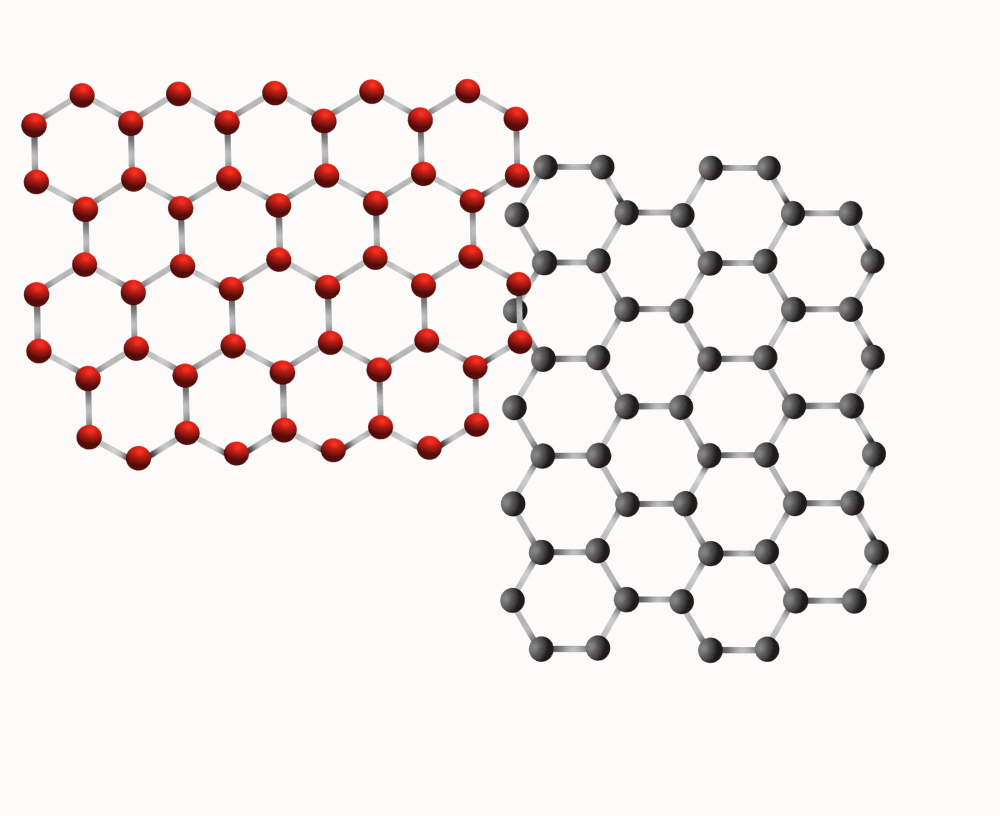Strange quasiparticles are bringing science fiction to life
No magic, just physics: how scientists are working with a set of phenomena they don’t fully understand
Gayoung Lee • January 7, 2024

An enigmatic bunch of particles could power futuristic inventions, physicists say [Credit: Gayoung Lee]
Floating cars, fingernail-sized supercomputers, black hole travel and a bunch of other far-out concepts might be here sooner than you think, thanks to the weirdness of an arcane but surprisingly productive realm of physics centered around quasiparticles.
They’re not really even particles. Instead, quasiparticles are strange phenomena that emerge from interactions among the 17 particles that are the fundamental building blocks of matter: things like electrons or photons. Ninety years ago, Soviet physicist Lev Landau predicted that when particles come together under certain conditions, they would appear to bend the fundamental laws of physics.
Since then, physicists have proved that these uncanny groupings not only exist, but they can also be useful. In the process, several quasiparticle researchers have won Nobel Prizes for their discoveries. But for the scientists who study them, an understanding of why these strange interactions occur remains elusive.
“We have mathematical equations that describe this [interaction] very, very accurately and successfully,” said Efthimios Kaxiras, a quantum physicist at Harvard University. “But if you dig very deep, why this happens is kind of a mystery.”
Take the electron: a tiny particle with a negative charge, commonly found inside an atom and a component of just about everything that exists. In nature, Kaxiras explained, the smallest amount of negative electrical charge is that of an electron. But different rules apply when a bunch of electrons are brought together under very specific conditions: electrons form the quasiparticle called the anyon.
“And that has a charge of one-third of an electron. You can actually play that game in many different ways: one-fifth, one-ninth, and so on. I mean, come on!” Kaxiras exclaimed. “They consist of many electrons, but they have a smaller charge than an electron. How can that be?”
As a concept, “quasiparticles means almost nothing by itself,” explained Cosetta Baroni, a doctoral student in quantum science at the University of Innsbruck in Austria. Each quasiparticle deals with vastly different concepts in quantum mechanics, added Baroni, whose recent work featured the quasiparticle called the polaron.
In general, quasiparticles are groups of particles with quantifiable physical properties, and they don’t actually violate any fundamental physical principles — even if they often take those principles in unexpected directions. As weird as they are, though, quasiparticles have some surprisingly practical applications, some of which sometimes teeter on the edge of science fiction.
Kaxiras’ research already sounds like something out of science fiction: twistronics. He works with a carbon-based material called graphene, which consists of two layers of an extremely thin, flat surface of electrons stacked on top of one another. According to the laws of physics, the two layers of electrons should have the same charge and repel each other, which these two sheets of graphene do.
But when one layer is “twisted” in at a specific angle, the electrons within the graphene sheets actually come together to form what are called Cooper pairs. Under extremely low temperatures, these electron pairs can be bundled together into a larger quasiparticle. What happens next is like magic, Kaxiras said.
This big particle is called a Bose-Einstein condensate, he went on. “If you manage to put all the electrons in this condensate, all these electrons can move through the solid as one thing,” Kaxiras said. “Because they’re all moving in unison, there’s no resistance.”

When two super-thin layers of electrons are arranged on top of each other at a very specific angle, they together act like a superconductor, which could someday enable floating cars and tiny supercomputers [Credit: Gayoung Lee]
Normally, graphene is considered a “poor” metal as a result of its low electric conductivity. However, when two sheets of graphene form twistronics, graphene suddenly behaves like a superconductor — a material with zero resistance, in which electricity flows at an extremely high speed. These kinds of superconductors have the potential to produce energy for flying cars or act as super-thin metallic parts of the circuit board in computers or phones. Already, a similar technology using graphene has been applied to MRI machines and solar cells.
Other quasiparticle researchers envision improvements to existing technologies. For example, older television models and microwave ovens operate on light emitted by electron acceleration called particle accelerators. It’s the same technology that physicists use on a massive scale to create, split and observe subatomic particles, allowing them to probe the building blocks of matter. These machines cost billions of dollars to build and consume tremendous amounts of electricity.
Bernardo Malaca, a doctoral student studying plasma physics at the University of Lisbon, is exploring a potential alternative technology that could make massive accelerators much more accessible — and he’s doing it with the help of quasiparticles.

CAP: Particle accelerators are key to probing the fundamental matter, but their huge size and cost limits their accessibility by researchers [Credit: Brookhaven National Laboratory | CC BY-NC-ND]
Malaca and a multinational group of scientists are creating “very fat” quasiparticles in plasma, or electrically charged gas, to illuminate the path for quantum researchers — literally, by proposing a light source “brighter than light.”
Their idea was inspired by a sudden flash of light propagating in the shape of a sonic boom inside plasma containing accelerated quasiparticles. This phenomenon, called Cherenkov radiation, can only be observed when quasiparticles exceed the speed of light.
Yet within this, there is a contradiction — and a glimpse at how so much of quasiparticle science remains unexplained: “Even though the particles themselves were not traveling faster than the speed of light,” Malaca said, “the wave, when you measure it, looks like it is actually going faster than the speed of light.”
In plasma, which can accommodate very strong magnetic fields, quasiparticles move at harrowing speeds, explained John Palastro, one of the physicists involved in the study. Such flexibility makes it possible not only to produce super-bright light with much smaller equipment but also to “synchronize” electron vibrations so that their collective brightness increases exponentially, Palastro explained.
For research, this could have several implications. First, the smaller size would make electron accelerators cheaper to produce. If they could be reduced to the size of existing MRI machines, they would be readily available to labs that don’t have enough space for kilometers-long accelerators.
Plasma-based quasiparticle accelerators could also support extraterrestrial research in the future, said Jorge Vieira, another physicist in the project. These super-bright light waves are short and quick, allowing them to penetrate high-density planetary bodies and, with the right calculations, even black holes. Analyzing how light waves are reflected off of an astrophysical object could enable physicists to replicate the object’s interior in their own Earthbound laboratories.

When light-emitting quasiparticles exceed the speed of light, they produce an explosion of cone-shaped light similar to the shape of a sonic boom created by supersonic jets [Credit: Bernardo Malaca]
“This is actually the branch of physics that has the most impact on your daily life,” said Douglas Natelson, who studies magnon and plasmon quasiparticles at Rice University. “The properties of all the materials around you, all of our fine computing devices, technology, really comes down to our understanding of the physics of materials.”
All of this research on quasiparticle applications might seem like putting the cart before the horse, considering how poorly understood the fundamental concepts still are. But quasiparticle research has always been a streamlined process, explained Alexander Paarmann, a German physicist at the Fritz Haber Institute of the Max Planck Society. According to Paarmann, “what usually brings about new discoveries is the push to develop certain methods for new insight.”
“That we can understand materials the way we do is actually an enormous intellectual achievement,” added Natelson. “It’s a very, very exciting field of science that’s still very active. There’s been a number of advances in the last 30 years that have really gotten to the point where I think there’s some very exciting things going on there.”
Malaca, for one, doesn’t intend to wait for his colleagues around the world to answer all of the most fundamental questions about the nature of quasiparticles — questions physicists have been grappling with for 90 years now, since the time of Lev Landau. Instead, Malaca is plunging ahead into work aimed at finding new ways to take advantage of their mysterious properties in futuristic technologies.
“If we can do that, we can push a little bit over the magical, the bigger — what seems impossible,” Malaca said. “Maybe, nice things will happen.”
Correction: An earlier version of this article incorrectly stated that the Cherenkov light cone was observed in blue when particles exceed the speed of light. However, it is observed when [light-emitting quasiparticles] exceed the speed of light. Updated January 9, 2024.